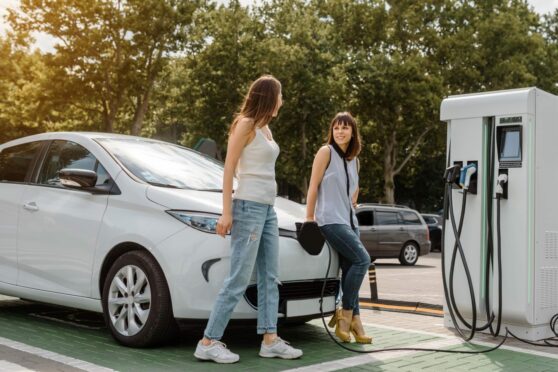Organisations should determine their climate impact to prepare for net zero. For property factors and managers, there’s an EV charger grant in Scotland that can help reduce their carbon footprints.
-
Some Courier online content is funded by outside parties. The revenue from this helps to sustain our independent news gathering. You will always know if you are reading paid-for material as it will be clearly labelled as “Partnership” on the site and on social media channels,
This can take two different forms.
“Presented by”
This means the content has been paid for and produced by the named advertiser.
“In partnership with”
This means the content has been paid for and approved by the named advertiser but written and edited by our own commercial content team.
Property factors and landlords should consider having electric vehicle charging infrastructure within their sites as the UK aims to reach net zero by 2050.
With commercial activity accounting for around 18% of the UK’s total carbon emissions, the government is pushing companies to be more transparent about their plans to hit carbon reduction targets.
However, many small and medium sized enterprises (SMEs), including property factors and landlords, cannot make decarbonisation commitments because they don’t even know what carbon accounting is.
What is carbon accounting?
Much like an accountant conducting an audit, carbon accounting involves quantifying the impact of an organisation’s activities. It requires tracking how much greenhouse gas emissions an organisation or business emits to understand its climate impact and to set goals to cut harmful emissions.
Your organisation’s carbon footprint
The amount of carbon dioxide and other greenhouse gases released into the atmosphere from your organisation’s activities is known as its carbon footprint.
These emissions can be divided into three categories:
1. Scope one emissions
These emissions come directly from your organisation or business, including those from fuel combustion in furnaces and vehicles as well as from chemical production.
2. Scope two emissions
These come indirectly from the consumption of energy bought from utility sources that you don’t own, including electricity, heating and cooling.
3. Scope three emissions
These cover all other indirect emissions linked to your commercial activities that your business doesn’t own or control. These include your entire supply chain, purchased goods, travel, waste, assets and investments. These emissions also come from how consumers use your products and services.
Measuring your organisation’s carbon footprint
Start by listing every operation, product and service. Then calculate emissions using bills or by asking your service providers for relevant information.
Some of the largest emitters for businesses are:
- Gas and oil
- Air conditioning maintenance
- Specialist equipment maintenance
- Manufacturing
- Waste
- Staff travel
- Transport fleets
- Fuel for vehicles
Find out more about how to measure your emissions.
Once you’ve measured emissions in all three categories, you’ll be able to complete a full emissions inventory.
Opportunity for property factors
For property factors, one way to help minimise emissions is to set up electric vehicle charging infrastructure within their developments.
This will also help to meet the rapidly growing demand for charge points. As many as 300,000 public charging locations are expected to be needed by 2030. That’s when Battery Electric Vehicles (BEVs) are seen to increase to 10 million in the UK, largely due to the impending ban on the sale of new vehicles with internal combustion engines.
Having charge points is also good for business, with research showing that customers want to support companies that help address the climate emergency. Currently, many investors also consider net zero plans when choosing their partners.
Get an EV charger grant in Scotland
In Scotland, property factors can apply for up to 50% of the cost of buying and installing charging infrastructure for their residential properties.
This scheme is available to those who manage and maintain land or property owned by more than one homeowner. This includes organisations that manage communal parking for residential properties.
If this sounds useful, make sure to apply before the fund closes.
Learn more about the factored development chargepoint funding.











